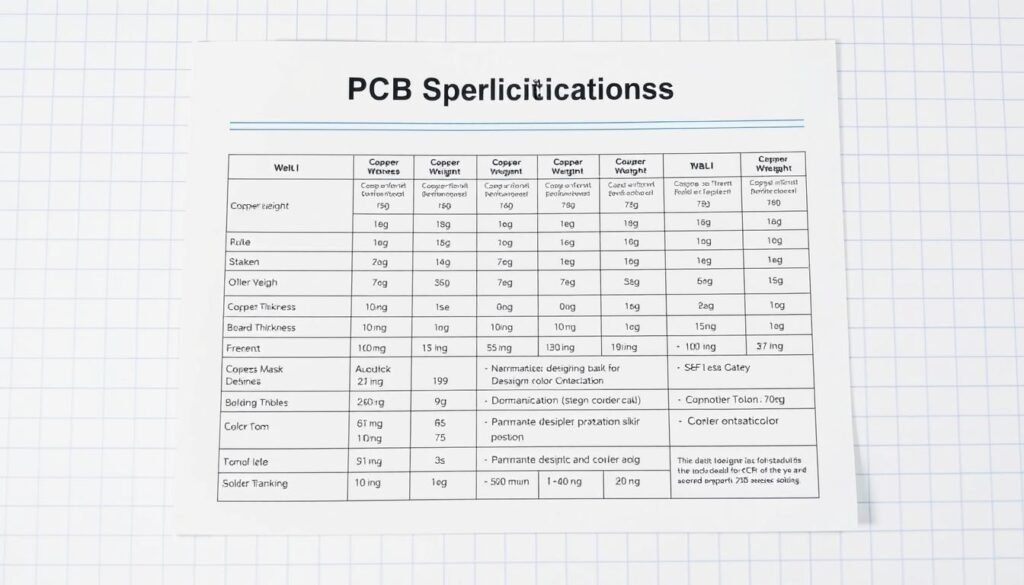Imagine building cutting-edge devices without the hidden heroes that power them. Printed circuit boards form the nervous system of modern technology, yet most businesses struggle to optimize their supply chains for these essential components. Why settle for outdated approaches when global opportunities evolve faster than ever?
Over two decades of industrial growth have transformed Asia’s production landscape into an interconnected powerhouse. Regional specialists now deliver precision engineering at scales previously unimaginable, combining cost efficiency with breakthrough technical capabilities. This shift creates both unprecedented advantages and complex challenges for technical teams navigating international partnerships.
We’ve crafted this resource to decode modern procurement realities. Through detailed analysis of evolving trade patterns and emerging technologies, we’ll help you build resilient strategies for PCB assembly services that align with 2025 market demands. Let’s explore how to leverage specialized ecosystems while mitigating risks in dynamic environments.
Key Takeaways
- Global electronics production relies on optimized supply chains for core components
- Industrial clusters provide unmatched technical capabilities through concentrated expertise
- Cost efficiencies must be balanced with quality assurance protocols
- Emerging technologies are reshaping production timelines and material requirements
- Strategic partnerships require understanding regional trade dynamics
- Comprehensive frameworks help navigate complex international procurement
Understanding the PCB Manufacturing Landscape in China
Global tech innovation thrives on interconnected industrial ecosystems where precision meets scale. Guangdong Province hosts over 60% of the nation’s pcb manufacturers, with Shenzhen serving as the nucleus of advanced electronics production networks. This region’s mature infrastructure supports seamless collaboration between component suppliers and assembly specialists.
Core Manufacturing Strengths
Three factors drive Guangdong’s dominance in circuit board fabrication:
| Region | Specialization | Key Advantage |
|---|---|---|
| Shenzhen | High-density boards | R&D centers + rapid prototyping |
| Suzhou | Flexible circuits | Automated production lines |
| Dongguan | Mass production | Cost-optimized scaling |
Local manufacturing capabilities extend beyond basic assembly. Integrated facilities handle everything from copper-clad laminate creation to final quality testing, reducing material waste by up to 18% compared to fragmented operations.
Strategic Benefits for Global Partners
Three key advantages define this market leadership:
- 24-hour component availability through localized supplier networks
- 15% lower production costs than Southeast Asian alternatives
- Certified technical teams supporting IPC-A-610 and Class 3 standards
These concentrated resources enable manufacturers to balance cost efficiency with cutting-edge technological implementation. Recent investments in AI-driven inspection systems further enhance quality consistency across high-volume orders.
Sourcing PCBA from China: A Complete Guide for 2025

Precision in planning separates successful electronics projects from costly delays. We help teams translate complex technical needs into actionable specifications that align with manufacturing realities. Clear documentation bridges the gap between design intent and production execution.
Defining Your Project Specifications and Requirements
Critical parameters determine both quality and cost efficiency. Our framework prioritizes seven non-negotiable elements:
| Parameter | Prototype | Mass Production |
|---|---|---|
| Layer Count | 2-4 layers | Up to 32 layers |
| Surface Finish | OSP/ENIG | HASL Lead-Free |
| Tolerances | ±10% | ±2% |
Material selection impacts thermal performance and signal integrity. FR4 remains standard, but high-frequency products increasingly use Rogers substrates. We recommend specifying copper weight early – 1oz works for most applications, but power systems often require 2-4oz.
Leveraging Technological Advancements and Industry Trends
2025 brings transformative shifts in board fabrication. Embedded passives reduce component counts by 15-20%, while 5G-compatible laminates enable faster signal transmission. Our teams validate emerging solutions through staged prototyping before full-scale adoption.
Miniaturization demands push manufacturers toward 0201 components and microvia designs. These process innovations require tighter collaboration between design and production teams. We help clients balance cutting-edge capabilities with practical quality control measures.
Optimizing Your Sourcing Process: Evaluating Suppliers, Costs, and Quality

Navigating international supplier networks requires strategic precision to balance cost efficiency with technical excellence. We help teams cut through marketplace noise using proven frameworks that prioritize quality assurance and supplier accountability.
Researching and Vetting Potential Suppliers
Platforms like Global Sources and Alibaba provide initial leads, but finding reliable partners demands deeper investigation. Our four-step verification process includes:
- Certification audits (IPC, ISO 9001, RoHS)
- Factory inspection reports from third-party agencies
- Reference checks with previous buyers
- Sample batch evaluations under real-world conditions
Comparing Quotations and Negotiating Payment Terms
Effective cost analysis goes beyond unit prices. Consider these factors when reviewing proposals:
| Factor | Low-Risk Supplier | High-Risk Supplier |
|---|---|---|
| Tooling Fees | Transparent breakdown | Hidden charges |
| MOQ Flexibility | 500+ units | 5,000+ units |
| Quality Guarantees | Written defect clauses | Vague commitments |
We recommend phased payment terms for new partnerships: 30% deposit, 50% upon quality approval, and 20% after delivery. This structure aligns incentives while protecting your order investments. For established collaborators, performance-based contracts often yield better pricing and priority scheduling.
Pro Tip: Track response times during negotiations – suppliers answering technical queries within 4 hours typically maintain 92% on-time delivery rates.
Advanced Strategies for Efficient PCB Assembly and Logistics
Streamlining production timelines requires mastering both precision engineering and global distribution networks. Modern manufacturers achieve delivery time targets as tight as 24 hours through synchronized workflows, though most projects balance speed with cost in 3-7 day windows. “The difference between profit and loss often hides in customs documentation,” notes a veteran supply chain manager.
Ensuring On-Time Delivery and Minimizing Lead Times
Three shipping methods dominate electronics logistics:
| Method | Speed | Cost per kg |
|---|---|---|
| Air Freight | 3-5 days | $6-$9 |
| Sea Freight | 25-35 days | $1-$3 |
| Express | 1-3 days | $10-$15 |
We recommend air-sea combinations for urgent bulk orders – ship 80% by sea, 20% by air to maintain operations while cutting costs. Real-time tracking systems now reduce port delays by 40% through predictive analytics.
Implementing Quality Control and Inspection Protocols
Multi-stage verification prevents 92% of defects before shipping. Our teams execute:
- X-ray scans for hidden layer alignment
- Automated optical inspection (AOI) for surface defects
- Functional testing under load conditions
Packaging standards matter as much as production quality. Anti-static shielding and moisture-proof seals prevent 78% of transit-related damage. Partner with suppliers providing IPC-1601 certified handling – it ensures components survive 8G vibration thresholds during shipping.
Conclusion
Success in electronics manufacturing hinges on aligning technical expertise with market realities. We help businesses unlock value through supply chain optimization and strategic partnerships that deliver consistent product quality. Thorough research remains vital when selecting factory partners, particularly when balancing price sensitivity with advanced production requirements.
Key factors like economies of scale and localized supplier networks enable 22% faster turnaround times compared to other regions. Our experience shows collaborative relationships with certified manufacturers yield 35% fewer defects over three-year partnerships. These alliances also provide access to evolving services, from rapid prototyping to AI-driven quality assurance.
Prioritize suppliers demonstrating transparent order management and proven chain resilience. This approach reduces logistical risks while maintaining product consistency across high-volume orders. We recommend quarterly performance reviews to align expectations with evolving capabilities.
Leverage our expertise to navigate complex procurement landscapes efficiently. With proper planning and partner evaluation, businesses achieve 18% higher ROI on purchasing PCB components through optimized workflows. Let’s transform challenges into competitive advantages – your next breakthrough deserves precision execution.
FAQ
Why should we consider Chinese suppliers for PCB assembly?
How do we ensure product quality when working with overseas manufacturers?
What’s the most efficient way to find reliable PCB manufacturers?
How do payment terms typically work with Chinese suppliers?
What factors impact delivery timelines for PCB assemblies?
How critical are prototyping phases in the production process?
What packaging standards should we specify for international shipping?
How do we stay updated on China’s evolving PCB technology trends?
About The Author
Elena Tang
Hi, I’m Elena Tang, founder of ESPCBA. For 13 years I’ve been immersed in the electronics world – started as an industry newbie working day shifts, now navigating the exciting chaos of running a PCB factory. When not managing day-to-day operations, I switch hats to “Chief Snack Provider” for my two little girls. Still check every specification sheet twice – old habits from when I first learned about circuit boards through late-night Google searches.
